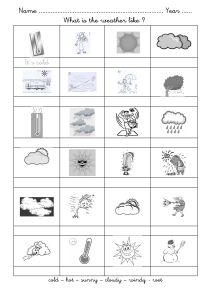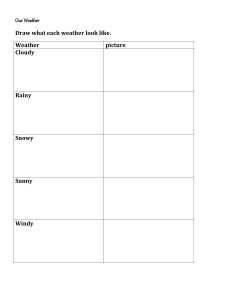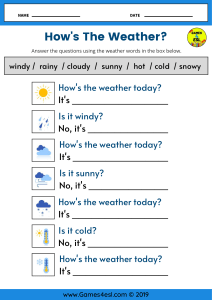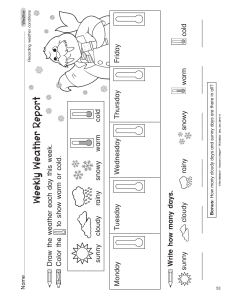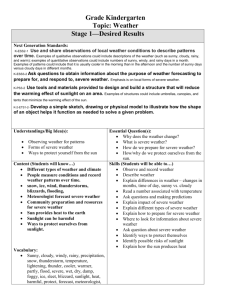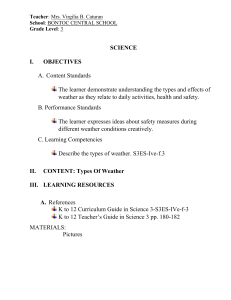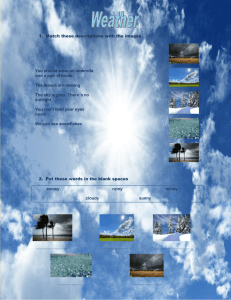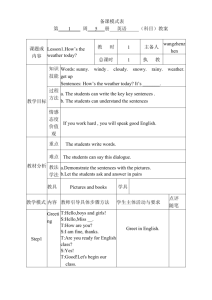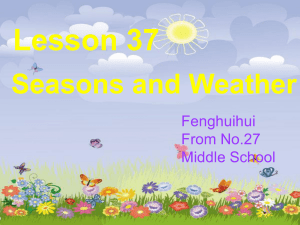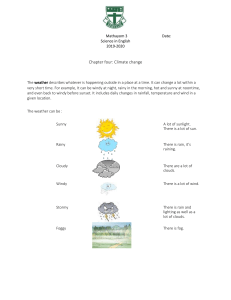Kindergarten Science: Earth's Systems & Weather Patterns
advertisement
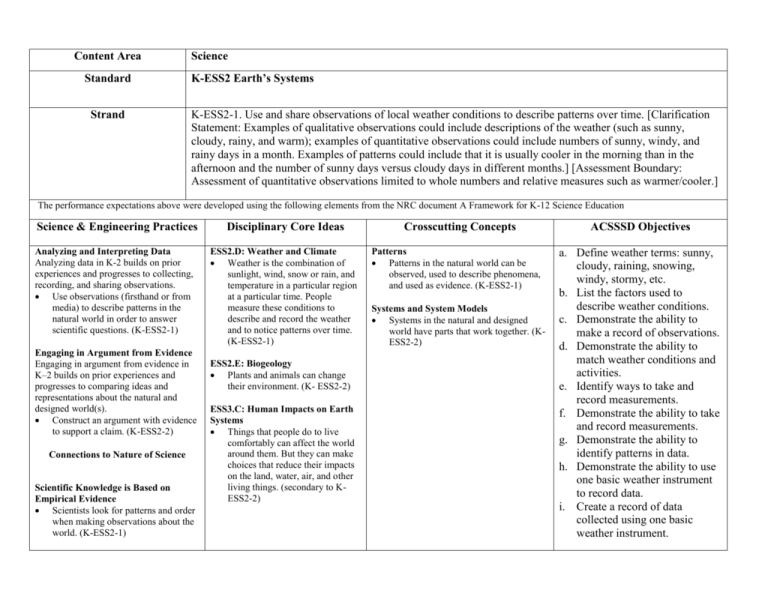
Content Area Standard Strand Science K-ESS2 Earth’s Systems K-ESS2-1. Use and share observations of local weather conditions to describe patterns over time. [Clarification Statement: Examples of qualitative observations could include descriptions of the weather (such as sunny, cloudy, rainy, and warm); examples of quantitative observations could include numbers of sunny, windy, and rainy days in a month. Examples of patterns could include that it is usually cooler in the morning than in the afternoon and the number of sunny days versus cloudy days in different months.] [Assessment Boundary: Assessment of quantitative observations limited to whole numbers and relative measures such as warmer/cooler.] The performance expectations above were developed using the following elements from the NRC document A Framework for K-12 Science Education Science & Engineering Practices Analyzing and Interpreting Data Analyzing data in K-2 builds on prior experiences and progresses to collecting, recording, and sharing observations. Use observations (firsthand or from media) to describe patterns in the natural world in order to answer scientific questions. (K-ESS2-1) Engaging in Argument from Evidence Engaging in argument from evidence in K–2 builds on prior experiences and progresses to comparing ideas and representations about the natural and designed world(s). Construct an argument with evidence to support a claim. (K-ESS2-2) Connections to Nature of Science Scientific Knowledge is Based on Empirical Evidence Scientists look for patterns and order when making observations about the world. (K-ESS2-1) Disciplinary Core Ideas ESS2.D: Weather and Climate Weather is the combination of sunlight, wind, snow or rain, and temperature in a particular region at a particular time. People measure these conditions to describe and record the weather and to notice patterns over time. (K-ESS2-1) ESS2.E: Biogeology Plants and animals can change their environment. (K- ESS2-2) ESS3.C: Human Impacts on Earth Systems Things that people do to live comfortably can affect the world around them. But they can make choices that reduce their impacts on the land, water, air, and other living things. (secondary to KESS2-2) Crosscutting Concepts Patterns Patterns in the natural world can be observed, used to describe phenomena, and used as evidence. (K-ESS2-1) Systems and System Models Systems in the natural and designed world have parts that work together. (KESS2-2) ACSSSD Objectives a. Define weather terms: sunny, cloudy, raining, snowing, windy, stormy, etc. b. List the factors used to describe weather conditions. c. Demonstrate the ability to make a record of observations. d. Demonstrate the ability to match weather conditions and activities. e. Identify ways to take and record measurements. f. Demonstrate the ability to take and record measurements. g. Demonstrate the ability to identify patterns in data. h. Demonstrate the ability to use one basic weather instrument to record data. i. Create a record of data collected using one basic weather instrument.
